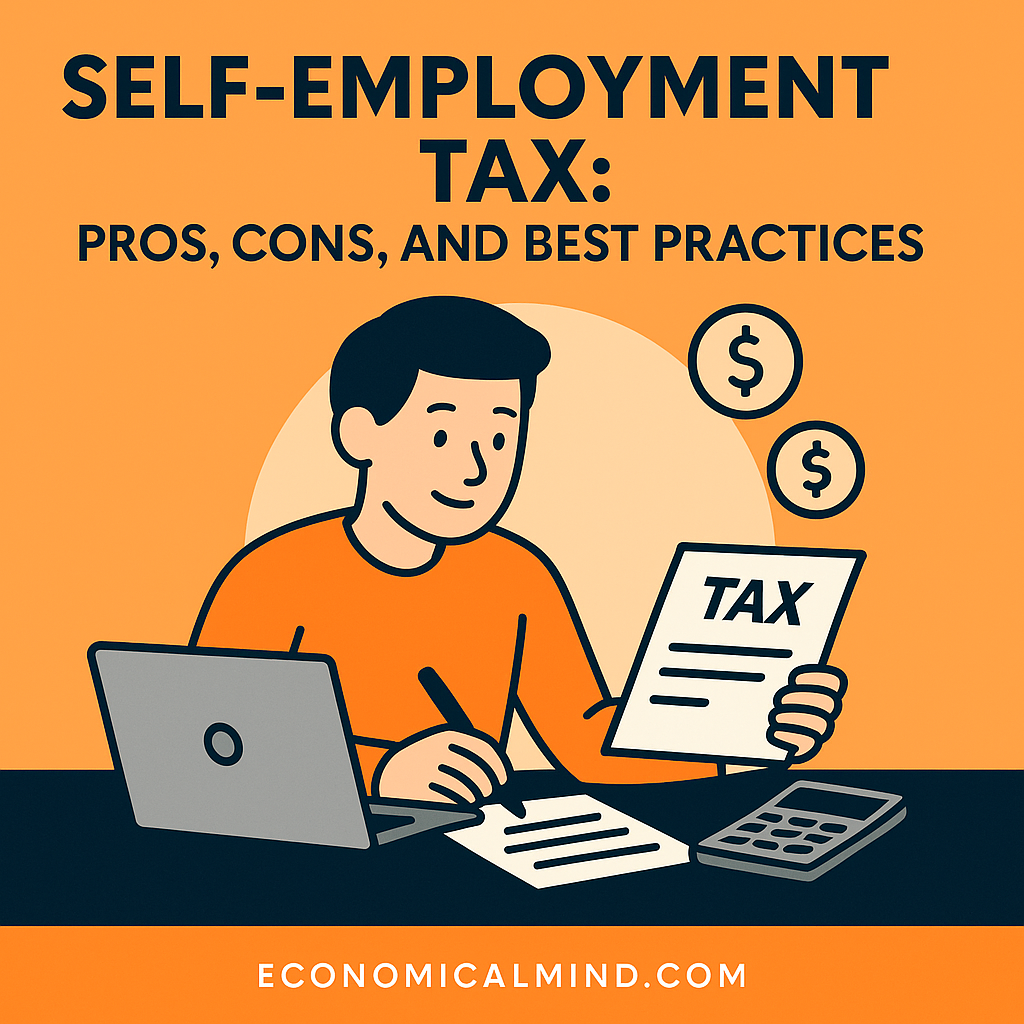
Being your own boss comes with freedom — but also extra tax responsibilities. If you freelance, consult, or run a small business, you’ve probably heard of the self-employment tax. Understanding what it covers and how to manage it can save you thousands (and major headaches) each year.
What Is the Self-Employment Tax?
Self-employment tax covers Social Security and Medicare contributions that employers normally split with employees. When you work for yourself, you pay both halves — a total of 15.3% on your net earnings.
It applies to freelancers, contractors, small business owners, and anyone earning more than $400 annually from self-employment.
Pros of Paying Self-Employment Tax
1. Builds Social Security and Medicare Benefits
You’re still contributing to your future retirement and healthcare benefits.
Example: Paying self-employment tax ensures you qualify for Social Security income later in life.
2. Gives You Full Control Over Deductions
Self-employed people can deduct business expenses directly from income before taxes.
Example: You can write off equipment, supplies, mileage, or home office costs.
3. Encourages Business Structure Awareness
Paying self-employment tax motivates you to understand your business finances better.
Example: Many freelancers use this knowledge to move toward LLC or S-Corp structures for efficiency.
4. Builds Financial Discipline
Setting aside taxes regularly encourages better money management habits.
Example: You’ll naturally learn to separate income, savings, and taxes like a true business owner.
Cons of Self-Employment Tax
1. Higher Overall Tax Burden
Paying both the employer and employee portions adds up quickly.
Fix: Track deductions carefully to reduce taxable income.
2. Quarterly Estimated Payments
You don’t get taxes automatically withheld — you must pay quarterly.
Fix: Set calendar reminders or automate transfers to the IRS each quarter.
3. Complicated Recordkeeping
You need to track all income and expenses accurately.
Fix: Use bookkeeping apps or hire a tax pro to stay organized.
4. Limited Benefits Compared to Employees
Self-employed workers don’t get employer-sponsored benefits like 401(k) matches or health coverage.
Fix: Set up your own retirement and insurance plans through SEP IRAs or solo 401(k)s.
5. Risk of Penalties
Missing payments or underestimating taxes can lead to penalties.
Fix: Use IRS Form 1040-ES to calculate estimates and avoid underpayment.
Best Practices for Managing Self-Employment Tax
1. Separate Business and Personal Accounts
Keeping business income separate simplifies tracking and avoids confusion during tax season.
2. Save 25–30% of Each Payment
Automatically set aside a portion of each deposit for taxes so you’re never caught off guard.
3. Pay Quarterly
Use IRS deadlines (April, June, September, and January) to stay compliant.
4. Track All Deductions
Expenses like internet, software, education, and office supplies can lower your taxable income.
5. Consider an S-Corp Election
At higher income levels, forming an S-Corp can reduce self-employment tax through payroll distribution.
6. Use Accounting Software
Tools like QuickBooks, Wave, or FreshBooks make tracking taxes much easier.
7. Work with a Tax Professional
If you earn more than $50,000 from self-employment, professional advice can save you far more than it costs.
Key Takeaway
The self-employment tax may seem like a burden, but it’s the cost of independence — and with smart planning, you can manage it efficiently. Treat your freelance or business income like a company’s finances, and tax time becomes predictable, not painful.
